Intracytoplasmic Sperm Injection (ICSI) is an assisted reproduction technique applied in cases of male infertility. As a sperm for ICSI is selected and introduced directly into the inside of the egg, the likelihood of successful fertilization increases significantly.
The core of the method
Naturally, to fertilize a woman's egg, sperm travel through the uterus into the fallopian tubes, one of which contains the egg ovulated that month. The head of a sperm must attach to the outer layer of the egg and push through it to the inside of the egg (cytoplasm). In some cases, the outer layer may be hard to penetrate, or the sperm motility may be low.
ICSI involves the direct insertion of a selected sperm into the woman's egg cell to facilitate fertilization. While IVF requires 50,000 to 100,000 sperm cells to fertilize one egg, during ICSI only one sperm is used per one egg cell. To select viable and mature sperm, our embryologists will either use an ejaculated semen sample or perform surgical extraction.
Indications
- Men who have undergone a vasectomy;
- Men with a low sperm count, reduced sperm motility or otherwise reduced fertility potential;
- Couples with history of fertilization failure;
- Couples with repeated IVF or AI failure;
- Couples who are to perform PGT;
- Cases of particularly valuable sperm samples due to their limited quantity (ICSI optimizes their use):
- Men undergoing radiotherapy or chemotherapy;
- Patients with difficulty achieving ejaculation;
- Men with obstructive azoospermia (zero sperm count due to a blockage in the sperm delivery channels), in which case surgical retrieval can be performed.
Results
ICSI allows using sperm with low motility or of suboptimal morphology to fertilize eggs. Overall success rates amount to 50% to 80%. The result may not be positive:
- Some or all of the eggs may be damaged;
- The egg might not grow into an embryo following sperm injection;
- The embryo may stop growing.
Once fertilization takes place, a couple’s chances of giving birth to a baby are the same as by using IVF.
Procedure
ICSI starts with a controlled ovarian stimulation performed on the patient or the donor to obtain a suitable number of eggs through follicular puncture.
The semen sample is then obtained, through ejaculation or testicular biopsy, and processed to secure optimal quality, as well as to promote its fertilizing capacity.
Both specimens are placed on a culture plate, and an individual sperm is selected based on its viability, maturity, motility, and morphology. The sperm is then immobilized and introduced inside the egg using a pipette.
This procedure is performed with each of the mature eggs obtained, thus maximizing fertilization.
The next day, the microinjected eggs are assessed to see which of them have fertilized correctly and developed into zygotes. The zygotes are kept in culture for up to 5 days and produce embryos, which are evaluated every day throughout their development. One best embryo is selected and transferred to the mother’s womb and the rest are vitrified for possible future use.


